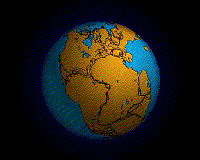
The modern theory of plate tectonics, which explains how the Earth’s continents and oceans have shifted over millions of years, wasn’t developed by a single person. Instead, it is the result of centuries of work by many different scientists. This introductory text will provide a brief overview of the key individuals who contributed to the development of this revolutionary geological theory.
- Abraham Ortelius (1596): A Dutch cartographer who, upon observing the coastlines of the Americas and Europe, first speculated that the continents were once joined.
- Antonio Snider-Pellegrini (1858): A French geographer who created a map showing the fit of the Americas and Africa, suggesting they were once connected.
- Alfred Wegener (1912): Proposed the Continental Drift Theory, a more comprehensive idea that suggested continents move through a “sea” of oceanic crust. He cited evidence from fossil records, matching rock formations, and glacial deposits.
- Arthur Holmes (1930s): Developed the Convectional Current Theory to provide a mechanism for Wegener’s idea. He suggested that heat from the Earth’s core creates convection currents in the mantle, which could move the tectonic plates.
- Harry Hess (1960s): Proposed the theory of Seafloor Spreading after studying the mid-ocean ridge. He suggested that new oceanic crust forms at these ridges and spreads outward, a process that could push continents apart.
- McKenzie and Parker (1967): Proposed the unifying Theory of Plate Tectonics, which brought together the concepts of continental drift and seafloor spreading into a single, comprehensive model. This theory describes the Earth’s lithosphere as a series of large, moving plates.